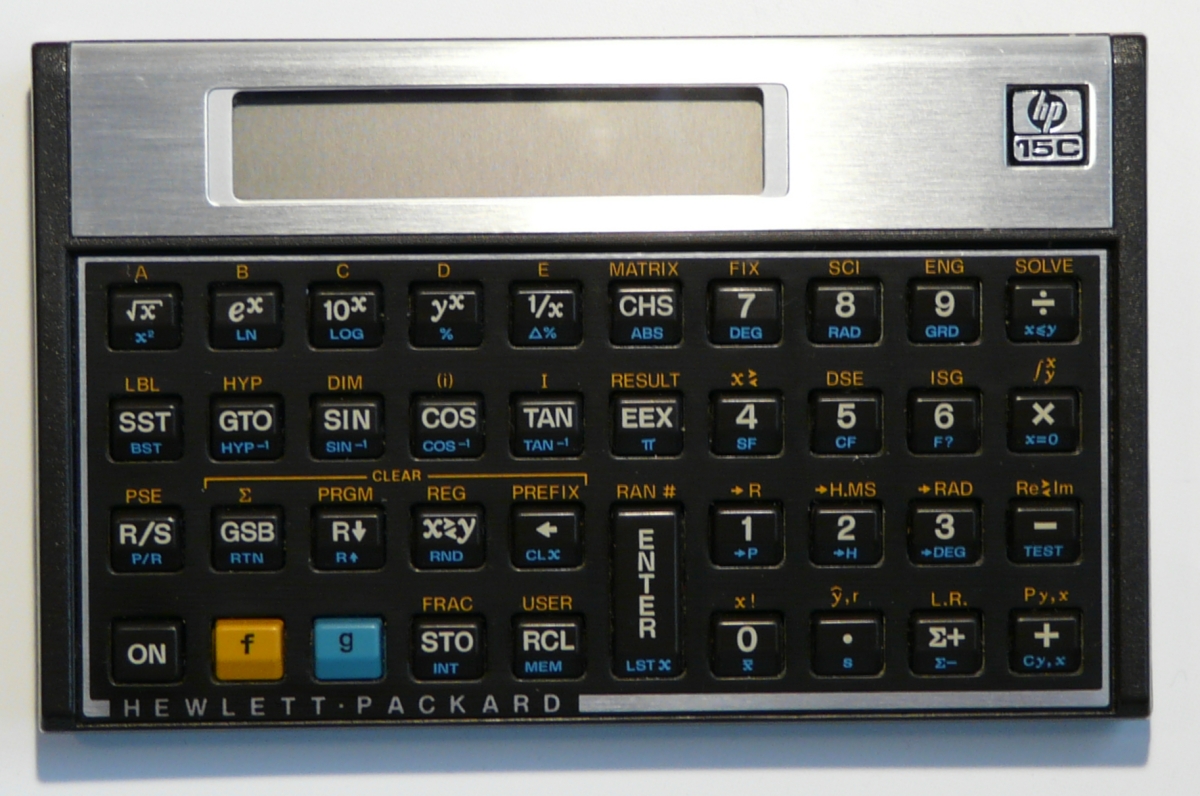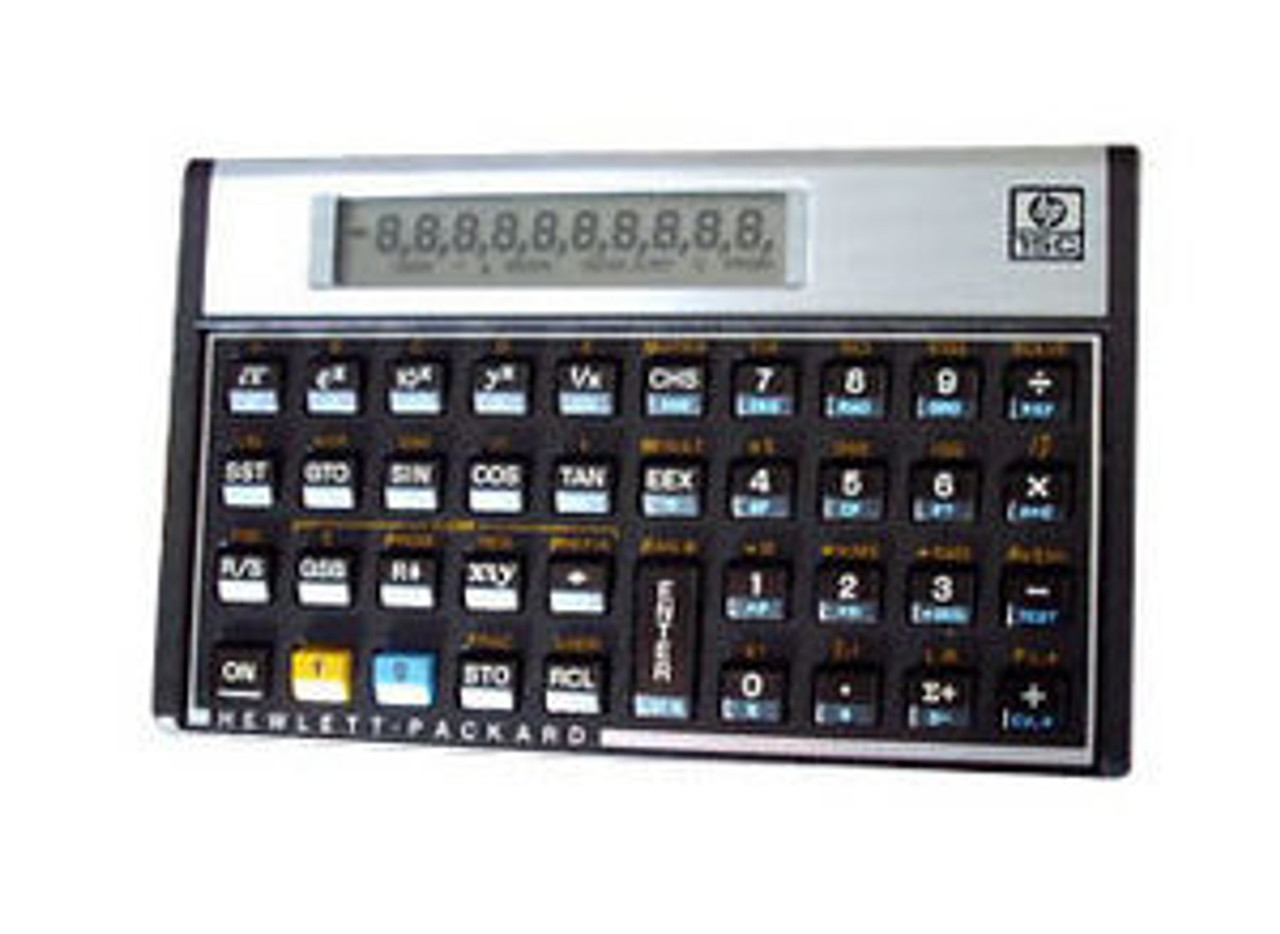

HP 15C Programming Tutorial - Part 4: Tests. HP 15C Programming Tutorial - Part 5: Subroutines. HP 15C Programming Tutorial - Part 6: Loops and Co. HP 15C Programming Tutorial - Part 7: Solve and In. HP 15C Programming Tutorial - Part 8: The Summatio. HP 15C Programming Tutorial - Part 9: Derivatives. HP 15C Programming Tutorial - Part 10: Statistics. HP 15C Programming Tutorial - Part 11: Flags. HP 15C Programming Tutorial - Part 12: Memory and. HP 15C Programming Tutorial - Part 13: Indirect Ad. Executing this key sequence four times allows you to view the entire stack. The key sequence (R ↑ ) is the roll up key sequence, which "rolls" the contents of the stack up one register. Pressing four times allows you to view the entire stack. Pressing this "rolls" the contents of the stack down one register. This key is useful in ordering values in the correct order and viewing two-result operations (such as the rectangular and polar conversions). The switches the contents both registers X and Y. (→ P ) is the Rectangular to Polar conversion function. (→ R ) is the Polar to Rectangular conversion function. LST x is good for correct errors and faster calculations should a number need to be repeated again.īoth π and LST x push the stack up. The key sequence (LST x) recalls the value that was in the display prior to the execution of a numeric operation. Obviously, the key sequence ( π ) enters π (pi) on the X stack. Two-number functions include +, - (returns Y - X), ×, ÷ (returns Y ÷ X), y^x, % (returns Y * X/100), Px,y (permutation), Cx,y (combination), and ∆% (percent change). The contents of Z register are moved to the Y register, and the contents of the T register are copied to the Z register. Two-number functions, g(X,Y), operate on the contents of the X and Y registers and returns the result on the X register. One-number functions include √, x^2, LN, e^x, LOG, 10^x, 1/x, CHS, SIN, SIN^-1, COS, COS^-1, TAN, TAN^-1, HYP (trig), HYP^-1 (trig), ABS, FRAC, INT, x!, → H (hours), → HMS (hours, minutes, seconds), → RAD, and → DEG. One-number functions, f(X), operate on the contents of the X register and returns the result on the X register. Y: the number just entered is copied here The next number you enter replaces the contents of the X register. Second, the number that was just entered not only stays in the X register, but is also copied to the Y register. First, it terminates entry of a number and prepares the calculator for another. We will go over how the stack is affected by the common operations of the calculator. The X stack is what you see in the display. The HP 15C calculator contains four stacks: T, Z, Y, and X. The first lesson will briefly cover the basics of the stack - which a working knowledge is essential to successfully programming the HP 15C. Our tutorial will use this default setting. 2 storage registers, R0 and RI, will always be used for numeric storage. Each storage register can contain a number in memory, or 7 bytes of programming.Īt default, the HP 15C allocates 19 storage registers as numeric storage, and 46 storage registers available for either programming or numeric storage. The calculator has has amount 67 storage registers. More information of the HP 15C calculator can be found here. We can only hope that Hewlett Packard considers making the HP 15C a permanent production once again. In September 2011, Hewlett Packard released a HP 15C Limited Edition calculator, that works just like the original, except it is much faster. In fact, it was so popular that demand for the HP 15C lasted well after Hewlett Packard ended its original production run in 1989. The HP 15C was originally released in 1982 and proved to be one of the most popular calculators. I also give a short RPN tutorial on my blog, which can be found here. Features include complex numbers, statistics, matrices, integration, and the ability to solve equations.Ĭ gives a short introduction to RPN here. 
This is a powerful scientific calculator that is RPN (Reverse Polish Notation) operated.
NEW HP 15C RPN SCIENTIFIC SERIES
This tutorial series covers keystroke programming with the Hewlett Packard 15C calculator.








